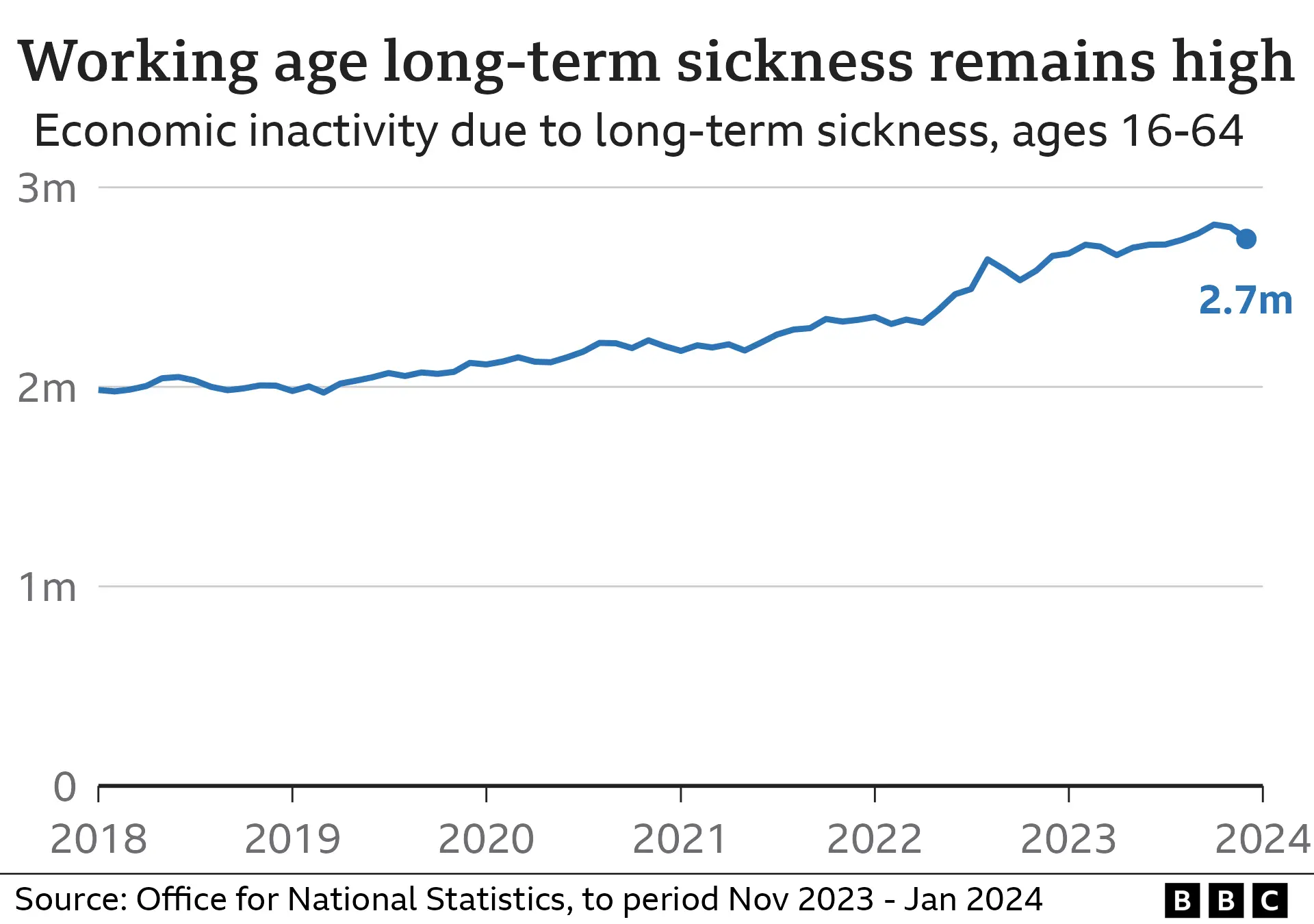Business
Workers Faces A Tight Option, Covid Vaccination Or No Job
September 14, 2021
March 12, 2024
More than a fifth of adults in the UK are deemed not to be actively looking for work, official figures suggest.
The UK's economic inactivity rate was 21.8% between November and January, marginally higher than a year earlier.
It means 9.2 million people aged between 16 and 64 in the UK are not in work nor looking for a job. The total figure is more than 700,000 higher than before the coronavirus pandemic.
Concerns have been raised over worker shortages affecting the UK economy.
The health of the UK economy is in the spotlight with the general election set to be called in the coming months and both major political parties pledging to boost growth.
The UK fell into recession at the end of last year when the economy shrank for two consecutive three-month periods, but latest official statistics showed the level of unemployment remained steady. The figure also showed that wage rises slowed again, although pay is still outpacing inflation.
However, the number of people not employed or actively looking for work has remained at a persistently high level in recent years since it first surged during the pandemic.
Long-term illness has been cited as the main reason for about a third of the working-age inactive population not being in the labour force.
But other groups placed in the bracket - defined differently to unemployment - by the ONS include students, people who look after family or a home, people with disabilities, and early retired and discouraged workers. More women tend to be classed as economically inactive compared to men.
The Office for National Statistics (ONS) said its latest figures suggested the number of people inactive due to being sick fell in recent months, but remained higher than estimates a year ago.
It added there had been an increase in people aged 16 to 34 becoming economically inactive, but that the number aged 35 to 64 had fallen.
Workforce shortages have led to Chancellor Jeremy Hunt setting out a series of measures, most recently in his Budget last week, aimed at encouraging people to find work, or increase hours.
Policies outlined include reducing the starting rate for National Insurance Contributions from 10% to 8% for 27 million workers from 6 April, along with an extension of free childcare services for working parents.
But business groups said more needed to be done to get more people into work amid concerns over the UK's long-term weak economic growth.
Alexandra Hall-Chen, principal policy adviser for employment at the Institute of Directors, said many companies were "still struggling to access the skills they need", arguing that the government should "focus on delivering on its promised expansion to childcare provision".
"A future government should place tackling skills shortages and increasing labour force participation at the centre of its growth plan," she added.
Neil Carberry, chief executive of the Recruitment and Employment Confederation, added that cutting NI rates was the "right call", but would not be a "silver bullet to encourage enough people to work".
"To get inactivity down government needs to look at childcare, transport and address NHS waiting lists," he said. "The Budget didn't add up to the industrial and workforce strategy we really need despite the Chancellor's obvious interest in workforce matters."
Jane Gratton, deputy director of public policy at the British Chambers of Commerce, added that employers also had a role to play in tackling shortages by offering "fair and flexible workplaces, alongside training and upskilling".
As well as the economic activity figures, the ONS also revealed:
The ONS has issued warnings over the reliability of its jobs market data, with the survey upon which its results are based on having a smaller number of respondents than has historically been the case.
Questions over the data on the jobs market raise issues for the Bank of England, which closes watches the ONS's releases to gauge the health of the UK economy.
Its governor Andrew Bailey has previously said the figures have posed "challenges" as policymakers weigh up what to do about interest rates in the coming months.
The Bank's main interest rate is at a 16-year high of 5.25%, which has led to higher mortgage rates due to the cost of borrowing money being more expensive, though returns on savings have also gone up.
Analysts have suggested rates could be reduced for a first time in June, but four of the UK's largest mortgage lenders, Halifax, NatWest, Santander and the Co-Op Bank, have increased mortgage rates this week.
Source: BBC
Image: Business in the News